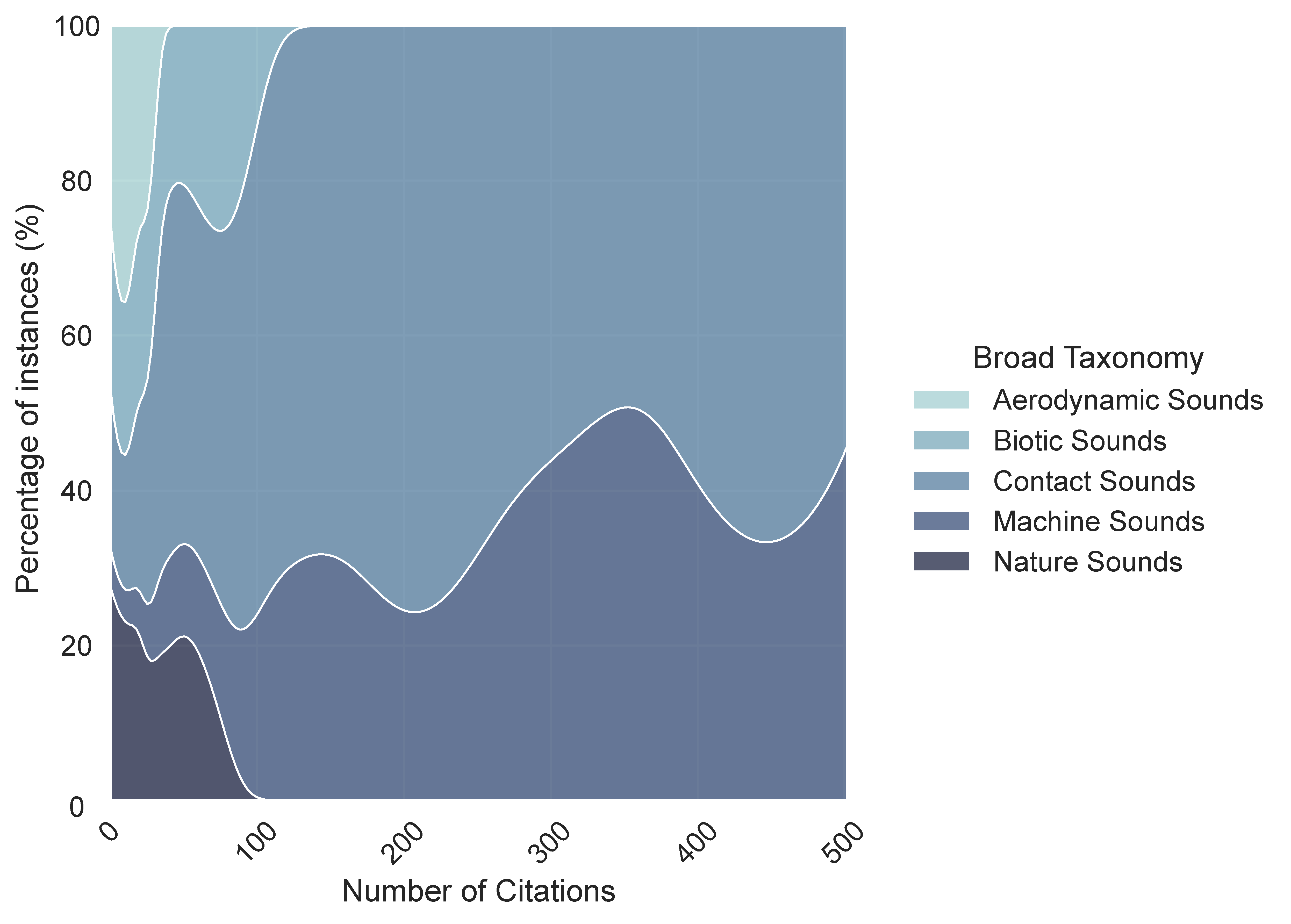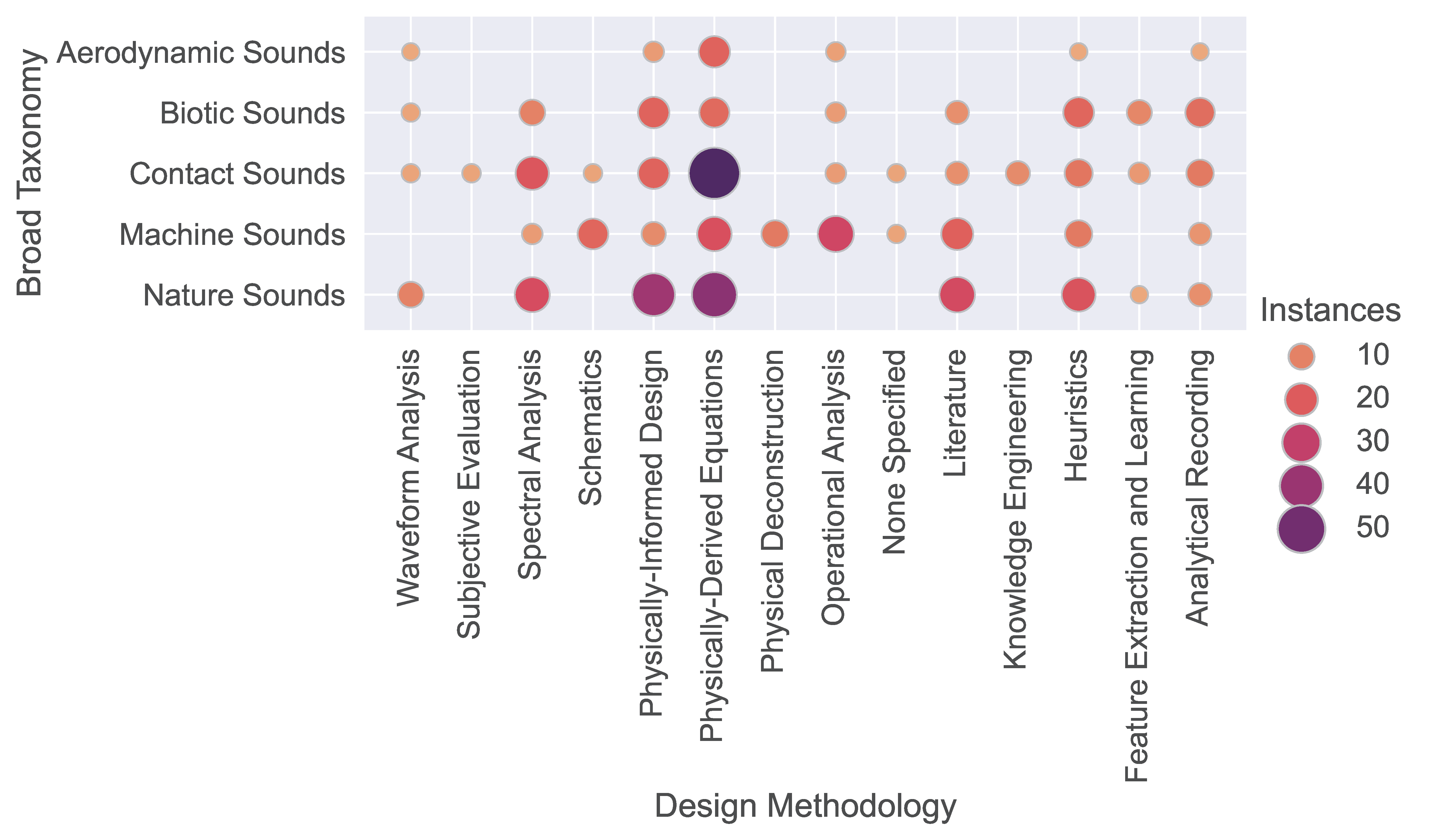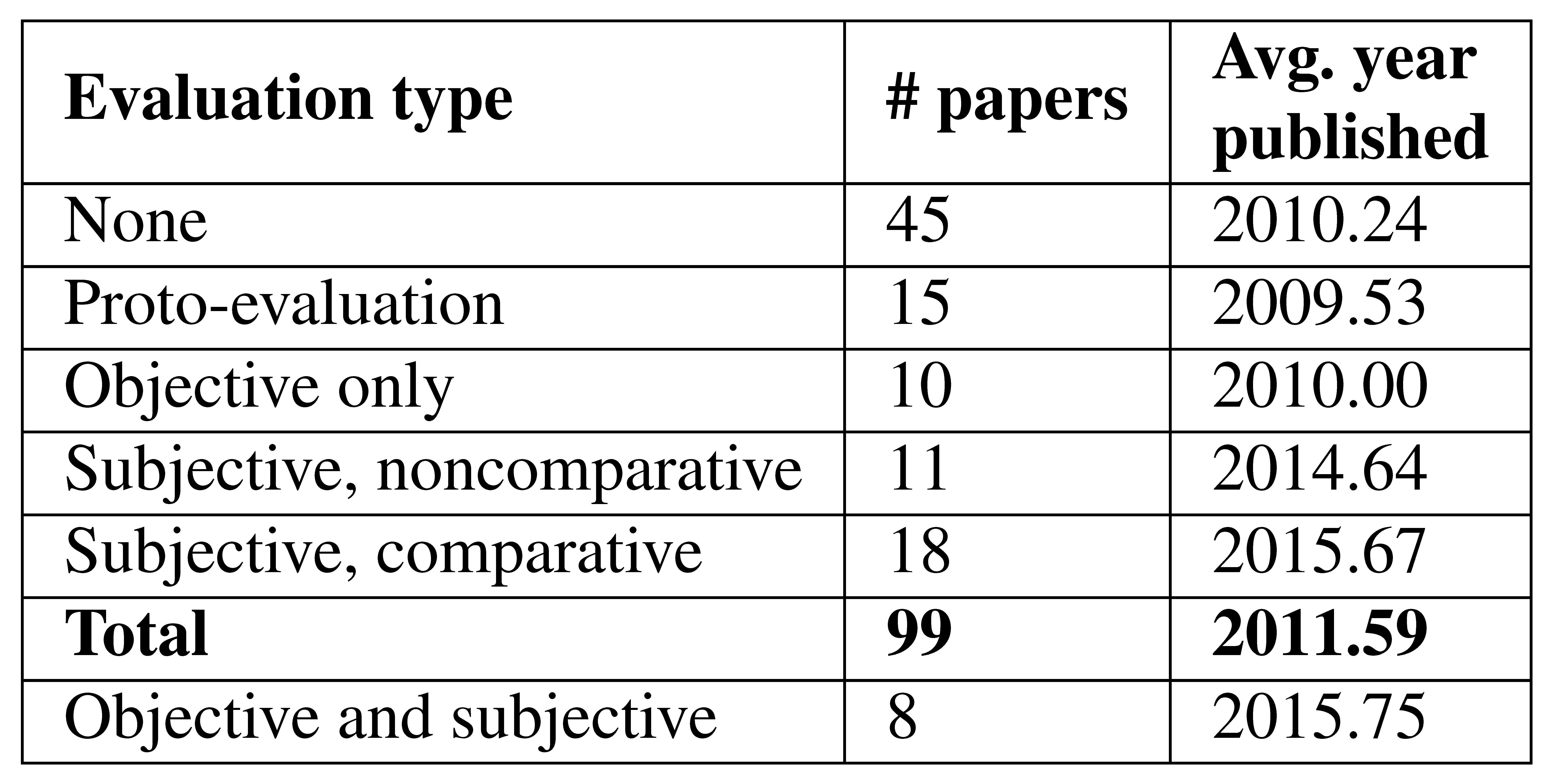Figures

Fig. 1: Flowchart highlighting the study selection process and the number of articles selected at each step.

Fig. 2: Number of articles published since 1993 including a practical algorithm in procedural audio, broken down into our main taxonomies.

Fig. 3: An analysis of how the number of citations for each paper is spread across our main taxonomy, highlighting what seems to be considered more relevant. Closer to the left one can see the distribution of taxonomic themes along articles that have been cited fewer times. To the right, articles that have been cited over 100 times are mainly distributed between two taxons (Machine and Contact Sounds).

Fig. 4: Relationship between the design strategies used to build the model (y-axis) and the synthesis type used (x-axis) for the articles in Table 1. Several articles will make use of more than one methodology and synthesis type, therefore this heatmap does not have a one-to-one relationship with the articles (i.e. there are many more items here than the total number of articles analyzed).

Fig. 5: Relationship between the design strategies used to build the model (x-axis) and the sound type characterization (y-axis) for the articles in Table 1.

